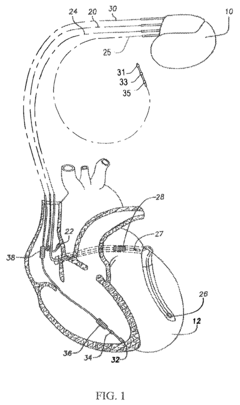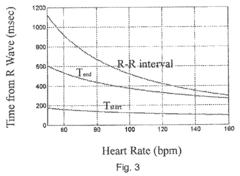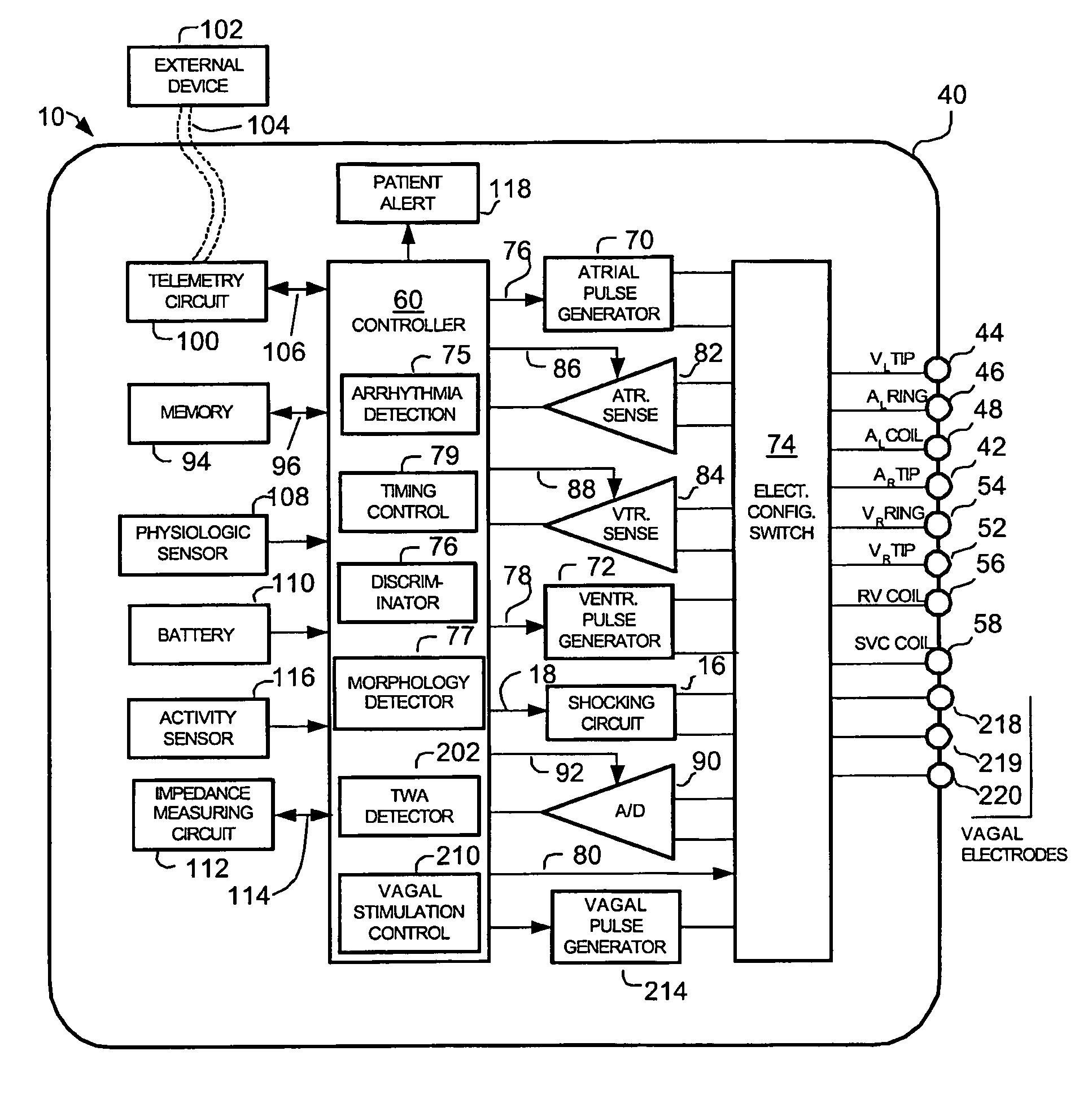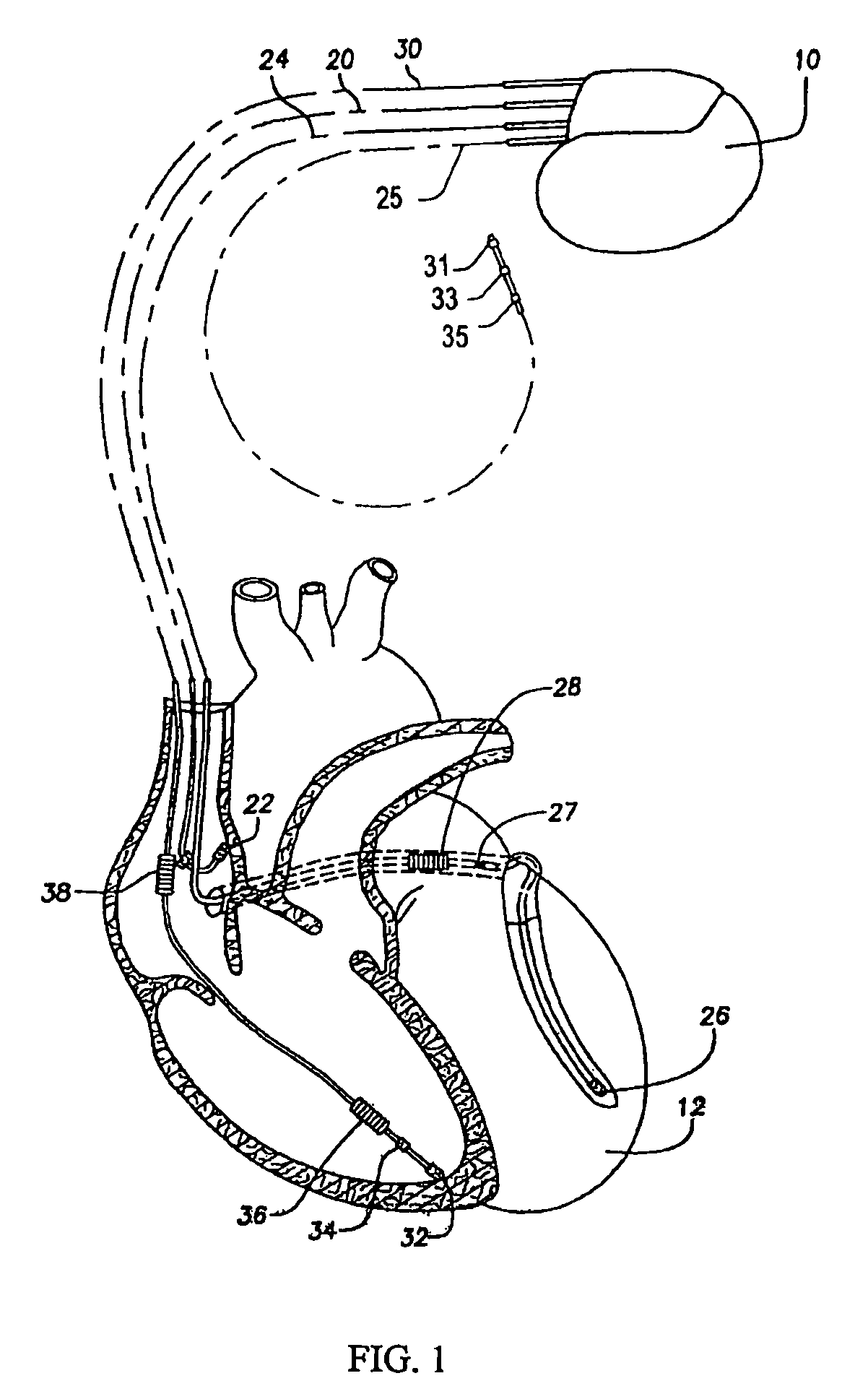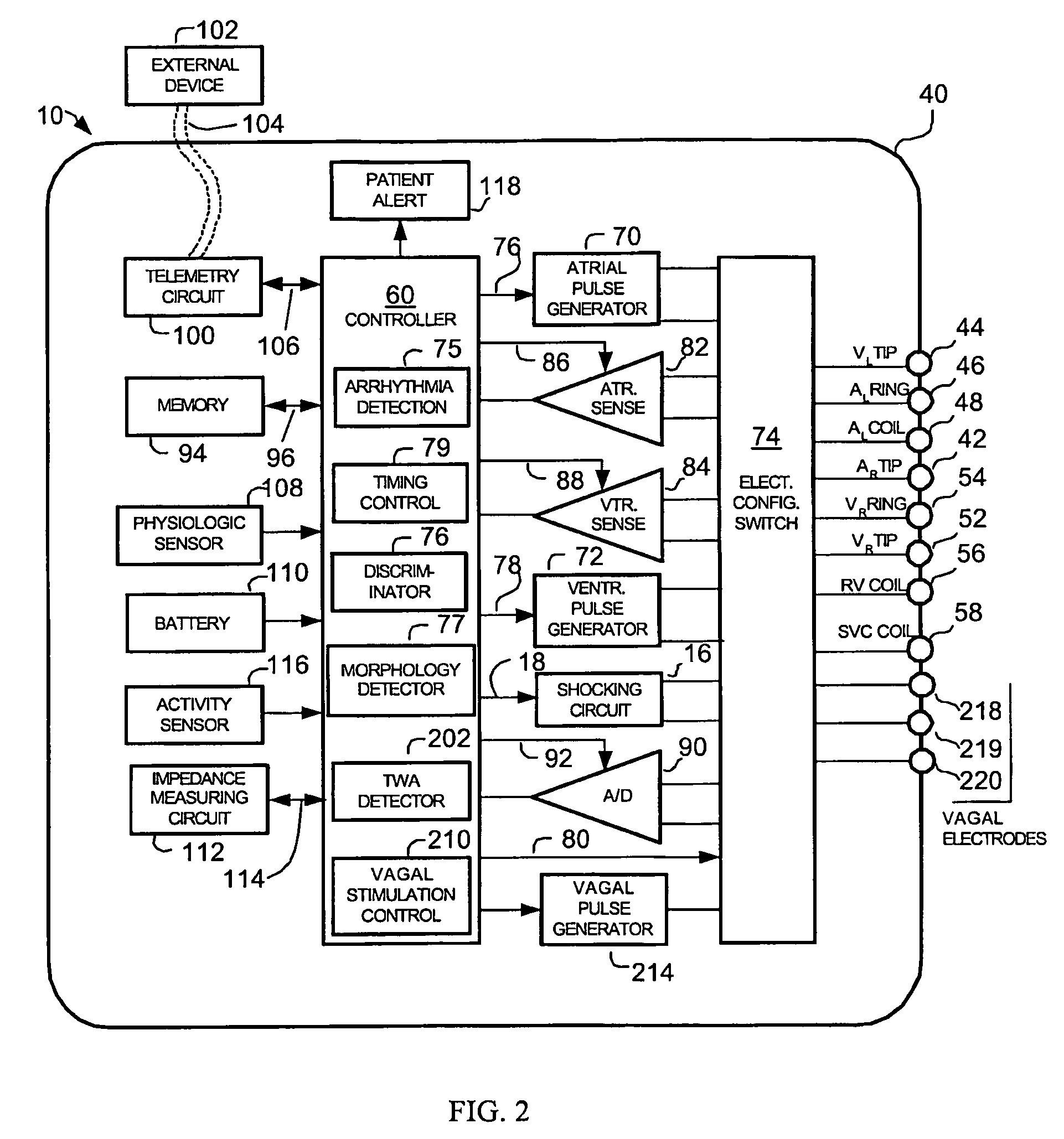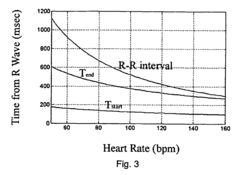Analyzing T wave inversion dynamics during arrhythmia treatments
AUG 19, 20259 MIN READ
Generate Your Research Report Instantly with AI Agent
Patsnap Eureka helps you evaluate technical feasibility & market potential.
T Wave Inversion Background and Objectives
T wave inversion is a critical electrocardiographic phenomenon that has been the subject of extensive research in cardiology for decades. This abnormality in the cardiac electrical cycle is characterized by a reversal of the normal T wave polarity, which typically represents ventricular repolarization. The study of T wave inversion dynamics during arrhythmia treatments has gained significant importance due to its potential implications in understanding the underlying mechanisms of various cardiac disorders and improving therapeutic strategies.
The evolution of T wave inversion research can be traced back to the early 20th century when electrocardiography was first introduced as a diagnostic tool. Since then, technological advancements in ECG recording and analysis have allowed for more precise observations of T wave morphology and its changes during different cardiac conditions. The advent of digital ECG systems and computerized analysis algorithms has further enhanced our ability to detect and quantify T wave inversions accurately.
In recent years, the focus has shifted towards understanding the dynamic nature of T wave inversions, particularly in the context of arrhythmia treatments. This shift is driven by the recognition that T wave inversions are not static phenomena but can change rapidly in response to various physiological and pathological conditions. The analysis of these dynamics offers valuable insights into the effectiveness of antiarrhythmic therapies and the progression of underlying cardiac pathologies.
The primary objective of studying T wave inversion dynamics during arrhythmia treatments is to develop more effective and personalized therapeutic approaches. By understanding how different treatments affect T wave morphology over time, clinicians can potentially predict treatment outcomes, adjust medication dosages, and identify patients at higher risk of adverse events. Additionally, this research aims to elucidate the electrophysiological mechanisms underlying various arrhythmias and their response to interventions.
Another crucial goal is to improve risk stratification in patients with cardiac disorders. T wave inversion patterns and their dynamic changes may serve as prognostic indicators for future cardiac events, allowing for more targeted preventive strategies. Furthermore, the integration of T wave inversion dynamics analysis with other cardiac parameters could lead to the development of more comprehensive and accurate predictive models for arrhythmia recurrence and sudden cardiac death.
As we delve deeper into this field, the ultimate aim is to translate these findings into practical clinical applications. This includes the development of advanced ECG monitoring systems capable of real-time analysis of T wave dynamics, as well as the creation of decision support tools to assist clinicians in interpreting complex ECG patterns. Such advancements could significantly enhance the management of arrhythmias and improve overall patient outcomes in cardiology.
The evolution of T wave inversion research can be traced back to the early 20th century when electrocardiography was first introduced as a diagnostic tool. Since then, technological advancements in ECG recording and analysis have allowed for more precise observations of T wave morphology and its changes during different cardiac conditions. The advent of digital ECG systems and computerized analysis algorithms has further enhanced our ability to detect and quantify T wave inversions accurately.
In recent years, the focus has shifted towards understanding the dynamic nature of T wave inversions, particularly in the context of arrhythmia treatments. This shift is driven by the recognition that T wave inversions are not static phenomena but can change rapidly in response to various physiological and pathological conditions. The analysis of these dynamics offers valuable insights into the effectiveness of antiarrhythmic therapies and the progression of underlying cardiac pathologies.
The primary objective of studying T wave inversion dynamics during arrhythmia treatments is to develop more effective and personalized therapeutic approaches. By understanding how different treatments affect T wave morphology over time, clinicians can potentially predict treatment outcomes, adjust medication dosages, and identify patients at higher risk of adverse events. Additionally, this research aims to elucidate the electrophysiological mechanisms underlying various arrhythmias and their response to interventions.
Another crucial goal is to improve risk stratification in patients with cardiac disorders. T wave inversion patterns and their dynamic changes may serve as prognostic indicators for future cardiac events, allowing for more targeted preventive strategies. Furthermore, the integration of T wave inversion dynamics analysis with other cardiac parameters could lead to the development of more comprehensive and accurate predictive models for arrhythmia recurrence and sudden cardiac death.
As we delve deeper into this field, the ultimate aim is to translate these findings into practical clinical applications. This includes the development of advanced ECG monitoring systems capable of real-time analysis of T wave dynamics, as well as the creation of decision support tools to assist clinicians in interpreting complex ECG patterns. Such advancements could significantly enhance the management of arrhythmias and improve overall patient outcomes in cardiology.
Clinical Demand for T Wave Analysis
The clinical demand for T wave analysis in arrhythmia treatments has grown significantly in recent years, driven by the increasing prevalence of cardiac disorders and the need for more accurate diagnostic and monitoring tools. T wave inversion, a key electrocardiographic feature, plays a crucial role in identifying various cardiac abnormalities and assessing the effectiveness of arrhythmia treatments.
Cardiologists and electrophysiologists require advanced T wave analysis techniques to better understand the underlying mechanisms of arrhythmias and optimize treatment strategies. The ability to analyze T wave inversion dynamics during arrhythmia treatments provides valuable insights into the cardiac electrical activity and helps clinicians make informed decisions regarding patient care.
One of the primary clinical demands for T wave analysis is in the early detection and risk stratification of potentially life-threatening arrhythmias. By closely monitoring T wave changes, healthcare providers can identify patients at higher risk of sudden cardiac death and implement preventive measures promptly. This is particularly important in conditions such as hypertrophic cardiomyopathy, long QT syndrome, and Brugada syndrome, where T wave abnormalities can be indicative of increased arrhythmic risk.
In the context of arrhythmia treatments, T wave analysis serves as a valuable tool for assessing the efficacy of various interventions. Antiarrhythmic medications, catheter ablation procedures, and implantable cardioverter-defibrillators (ICDs) can all influence T wave morphology and dynamics. Clinicians rely on detailed T wave analysis to evaluate treatment outcomes, adjust medication dosages, and optimize device settings for individual patients.
Furthermore, the demand for T wave analysis extends to the field of personalized medicine in cardiology. By studying the unique T wave characteristics of each patient, healthcare providers can tailor treatment approaches to individual needs, potentially improving outcomes and reducing adverse effects. This personalized approach is particularly relevant in complex cases where standard treatments may not be sufficient or appropriate.
The growing adoption of remote monitoring systems and wearable ECG devices has also fueled the demand for advanced T wave analysis capabilities. These technologies enable continuous monitoring of cardiac activity in outpatient settings, allowing for early detection of T wave changes that may indicate impending arrhythmic events or treatment-related complications.
As the field of cardiac electrophysiology continues to evolve, there is an increasing need for more sophisticated T wave analysis tools that can provide real-time, automated interpretation of ECG data. Such tools would greatly enhance the ability of clinicians to make rapid, informed decisions in both acute and chronic arrhythmia management scenarios.
Cardiologists and electrophysiologists require advanced T wave analysis techniques to better understand the underlying mechanisms of arrhythmias and optimize treatment strategies. The ability to analyze T wave inversion dynamics during arrhythmia treatments provides valuable insights into the cardiac electrical activity and helps clinicians make informed decisions regarding patient care.
One of the primary clinical demands for T wave analysis is in the early detection and risk stratification of potentially life-threatening arrhythmias. By closely monitoring T wave changes, healthcare providers can identify patients at higher risk of sudden cardiac death and implement preventive measures promptly. This is particularly important in conditions such as hypertrophic cardiomyopathy, long QT syndrome, and Brugada syndrome, where T wave abnormalities can be indicative of increased arrhythmic risk.
In the context of arrhythmia treatments, T wave analysis serves as a valuable tool for assessing the efficacy of various interventions. Antiarrhythmic medications, catheter ablation procedures, and implantable cardioverter-defibrillators (ICDs) can all influence T wave morphology and dynamics. Clinicians rely on detailed T wave analysis to evaluate treatment outcomes, adjust medication dosages, and optimize device settings for individual patients.
Furthermore, the demand for T wave analysis extends to the field of personalized medicine in cardiology. By studying the unique T wave characteristics of each patient, healthcare providers can tailor treatment approaches to individual needs, potentially improving outcomes and reducing adverse effects. This personalized approach is particularly relevant in complex cases where standard treatments may not be sufficient or appropriate.
The growing adoption of remote monitoring systems and wearable ECG devices has also fueled the demand for advanced T wave analysis capabilities. These technologies enable continuous monitoring of cardiac activity in outpatient settings, allowing for early detection of T wave changes that may indicate impending arrhythmic events or treatment-related complications.
As the field of cardiac electrophysiology continues to evolve, there is an increasing need for more sophisticated T wave analysis tools that can provide real-time, automated interpretation of ECG data. Such tools would greatly enhance the ability of clinicians to make rapid, informed decisions in both acute and chronic arrhythmia management scenarios.
Current Challenges in T Wave Dynamics Assessment
The assessment of T wave dynamics during arrhythmia treatments faces several significant challenges that hinder accurate analysis and interpretation. One of the primary obstacles is the complex and often unpredictable nature of arrhythmias themselves. The irregular heart rhythms associated with various types of arrhythmias can lead to inconsistent T wave morphologies, making it difficult to establish reliable baseline measurements and track changes over time.
Another major challenge lies in the variability of T wave inversions across different patient populations and arrhythmia types. Factors such as age, gender, underlying cardiac conditions, and medication effects can all influence T wave characteristics, necessitating a more personalized approach to analysis. This heterogeneity complicates the development of standardized assessment protocols and interpretation guidelines.
The dynamic nature of T wave inversions during arrhythmia treatments presents additional complexities. As treatments progress, T wave morphologies may change rapidly, requiring real-time analysis capabilities that can keep pace with these alterations. Current technologies and methodologies often struggle to provide the temporal resolution needed for such dynamic assessments, potentially missing critical information during treatment interventions.
Furthermore, the presence of noise and artifacts in electrocardiogram (ECG) recordings poses a significant challenge to accurate T wave analysis. Motion artifacts, electromagnetic interference, and other sources of signal distortion can obscure subtle changes in T wave morphology, leading to misinterpretation or missed diagnoses. Developing robust signal processing techniques to isolate and analyze T waves amidst these disturbances remains an ongoing challenge in the field.
The integration of T wave dynamics assessment into existing clinical workflows and decision-making processes presents yet another hurdle. Many healthcare providers lack the specialized training required to interpret complex T wave changes, particularly in the context of ongoing arrhythmia treatments. This knowledge gap necessitates the development of more intuitive analysis tools and clearer guidelines for clinical application.
Lastly, the lack of large-scale, longitudinal studies on T wave inversion dynamics during arrhythmia treatments limits our understanding of long-term prognostic implications. Without comprehensive data on how T wave changes correlate with treatment outcomes and patient prognosis, it remains challenging to fully leverage this information for optimizing arrhythmia management strategies.
Another major challenge lies in the variability of T wave inversions across different patient populations and arrhythmia types. Factors such as age, gender, underlying cardiac conditions, and medication effects can all influence T wave characteristics, necessitating a more personalized approach to analysis. This heterogeneity complicates the development of standardized assessment protocols and interpretation guidelines.
The dynamic nature of T wave inversions during arrhythmia treatments presents additional complexities. As treatments progress, T wave morphologies may change rapidly, requiring real-time analysis capabilities that can keep pace with these alterations. Current technologies and methodologies often struggle to provide the temporal resolution needed for such dynamic assessments, potentially missing critical information during treatment interventions.
Furthermore, the presence of noise and artifacts in electrocardiogram (ECG) recordings poses a significant challenge to accurate T wave analysis. Motion artifacts, electromagnetic interference, and other sources of signal distortion can obscure subtle changes in T wave morphology, leading to misinterpretation or missed diagnoses. Developing robust signal processing techniques to isolate and analyze T waves amidst these disturbances remains an ongoing challenge in the field.
The integration of T wave dynamics assessment into existing clinical workflows and decision-making processes presents yet another hurdle. Many healthcare providers lack the specialized training required to interpret complex T wave changes, particularly in the context of ongoing arrhythmia treatments. This knowledge gap necessitates the development of more intuitive analysis tools and clearer guidelines for clinical application.
Lastly, the lack of large-scale, longitudinal studies on T wave inversion dynamics during arrhythmia treatments limits our understanding of long-term prognostic implications. Without comprehensive data on how T wave changes correlate with treatment outcomes and patient prognosis, it remains challenging to fully leverage this information for optimizing arrhythmia management strategies.
Existing T Wave Inversion Detection Methods
01 ECG signal analysis for T wave inversion detection
Methods and systems for analyzing ECG signals to detect and characterize T wave inversions. This involves processing ECG data to identify T wave morphology changes, quantify inversion depth and duration, and track dynamic changes over time. Advanced signal processing techniques are used to isolate T waves and measure their characteristics accurately.- ECG signal analysis for T wave inversion detection: Advanced algorithms and methods are developed to analyze ECG signals and detect T wave inversions. These techniques involve signal processing, feature extraction, and pattern recognition to accurately identify and characterize T wave inversions in electrocardiograms.
- Dynamic monitoring of T wave inversion: Systems and methods for continuous or periodic monitoring of T wave inversions are developed. These approaches allow for tracking changes in T wave morphology over time, enabling early detection of cardiac abnormalities and assessment of disease progression.
- Machine learning applications in T wave inversion analysis: Machine learning and artificial intelligence techniques are employed to improve the accuracy and efficiency of T wave inversion detection and classification. These methods can learn from large datasets to identify subtle patterns and predict potential cardiac issues based on T wave dynamics.
- Wearable devices for T wave inversion monitoring: Wearable ECG devices are developed to enable continuous monitoring of T wave inversions in daily life. These devices integrate sensors, data processing, and wireless communication to provide real-time analysis and alerts for T wave abnormalities.
- Clinical interpretation and risk stratification of T wave inversions: Methods and systems are developed to assist clinicians in interpreting T wave inversion dynamics and assessing associated cardiac risks. These tools incorporate clinical guidelines, patient history, and other relevant factors to provide comprehensive risk stratification and treatment recommendations.
02 Machine learning algorithms for T wave inversion classification
Application of machine learning and artificial intelligence techniques to classify and predict T wave inversions. These algorithms are trained on large datasets of ECG recordings to recognize patterns associated with different types of T wave inversions and their clinical significance. This enables automated detection and risk stratification of T wave abnormalities.Expand Specific Solutions03 Real-time monitoring of T wave inversion dynamics
Development of wearable devices and continuous monitoring systems that track T wave inversion dynamics in real-time. These systems provide alerts for sudden changes in T wave morphology and allow for long-term trend analysis. They incorporate advanced sensors and data transmission technologies to enable remote monitoring and early detection of cardiac events.Expand Specific Solutions04 Correlation of T wave inversion with other cardiac parameters
Studies and methods to analyze the relationship between T wave inversion dynamics and other cardiac parameters such as heart rate variability, QT interval, and ST segment changes. This integrated approach provides a more comprehensive assessment of cardiac health and improves the diagnostic accuracy of T wave inversion analysis.Expand Specific Solutions05 Pharmacological interventions affecting T wave inversion
Research on the effects of various medications and interventions on T wave inversion dynamics. This includes studies on drugs that can induce or resolve T wave inversions, as well as therapeutic approaches to manage underlying conditions associated with abnormal T wave morphology. The goal is to develop targeted treatments and improve patient outcomes.Expand Specific Solutions
Key Players in Cardiac Monitoring Industry
The competitive landscape for analyzing T wave inversion dynamics during arrhythmia treatments is characterized by a mature market with established players and ongoing innovation. The industry is in a growth phase, driven by increasing prevalence of cardiovascular diseases and demand for advanced diagnostic tools. Major companies like Medtronic, Boston Scientific (through Cardiac Pacemakers, Inc.), and Abbott (via Pacesetter, Inc.) dominate the market with their extensive product portfolios and R&D capabilities. Emerging players and research institutions, such as Beth Israel Deaconess Medical Center and Washington University in St. Louis, contribute to technological advancements. The market size is substantial, reflecting the global burden of cardiac arrhythmias. While core ECG technology is well-established, there's ongoing development in AI-assisted analysis and remote monitoring solutions, indicating room for further innovation and market expansion.
Medtronic, Inc.
Technical Solution: Medtronic has developed advanced algorithms for analyzing T wave inversion dynamics during arrhythmia treatments. Their approach utilizes machine learning techniques to process real-time electrocardiogram (ECG) data, enabling more accurate detection of T wave inversions. The system employs a multi-lead ECG analysis, considering spatial and temporal variations across different leads to improve sensitivity and specificity[1]. Medtronic's solution also incorporates adaptive thresholding techniques to account for patient-specific variations in T wave morphology, enhancing the robustness of the analysis across diverse patient populations[3].
Strengths: Comprehensive multi-lead analysis, adaptive algorithms for patient-specific variations. Weaknesses: May require significant computational resources, potentially limiting use in some implantable devices.
Pacesetter, Inc.
Technical Solution: Pacesetter has developed a novel approach to analyzing T wave inversion dynamics during arrhythmia treatments, focusing on integration with implantable cardioverter-defibrillators (ICDs). Their system utilizes a combination of time-domain and frequency-domain analysis techniques to characterize T wave morphology changes[2]. The algorithm employs wavelet transform methods to decompose the ECG signal, allowing for more precise identification of subtle T wave inversions that may be indicative of emerging arrhythmias[4]. Pacesetter's technology also incorporates a learning component that adapts to individual patient baselines over time, improving the accuracy of arrhythmia detection and reducing false positives[5].
Strengths: Highly integrated with ICD systems, adaptive learning for personalized analysis. Weaknesses: May be limited to use with Pacesetter's proprietary ICD hardware.
Innovations in T Wave Morphology Analysis
Methods and systems for analyzing T-wave alternans
PatentActiveUS8874198B2
Innovation
- An implantable cardiac device is equipped with a method to predict arrhythmia complexity by tracking beat-by-beat alterations in intracardiac electrogram features, using equations to correct T-wave detection for heart rate and calculating percentage reversal points to identify arrhythmia risks, allowing for early prediction and optimization of antiarrhythmia therapy.
Methods and systems for analyzing T-wave alternans
PatentInactiveUS8255043B2
Innovation
- An implantable cardiac device method that extracts EGM features, tracks beat-by-beat alterations, and uses heart rate-dependent corrections to predict arrhythmia complexity and vulnerability, allowing for optimized antiarrhythmia therapy and continuous monitoring of T-wave alternans.
Regulatory Framework for ECG Algorithms
The regulatory framework for ECG algorithms plays a crucial role in ensuring the safety, efficacy, and reliability of arrhythmia treatment technologies. As the field of cardiac electrophysiology continues to advance, regulatory bodies have established comprehensive guidelines to govern the development, validation, and implementation of ECG analysis algorithms.
In the United States, the Food and Drug Administration (FDA) oversees the regulation of ECG algorithms through its medical device approval process. The FDA classifies ECG algorithms as software as a medical device (SaMD) and requires manufacturers to demonstrate substantial evidence of safety and effectiveness before granting market approval. This process typically involves rigorous clinical trials and extensive documentation of the algorithm's performance metrics.
The European Union has implemented the Medical Device Regulation (MDR) and In Vitro Diagnostic Regulation (IVDR), which set stringent requirements for ECG algorithms. These regulations emphasize the importance of clinical evaluation, risk management, and post-market surveillance. Manufacturers must obtain CE marking to indicate compliance with EU health, safety, and environmental protection standards.
International standards, such as IEC 60601-2-47 for ambulatory electrocardiographic systems and IEC 62304 for medical device software, provide additional guidance for ECG algorithm development. These standards outline requirements for software lifecycle processes, risk management, and performance evaluation.
Regulatory bodies also focus on the validation of ECG algorithms, particularly in the context of T wave inversion dynamics analysis during arrhythmia treatments. Guidelines typically require manufacturers to demonstrate the algorithm's accuracy, sensitivity, and specificity across diverse patient populations and clinical scenarios. This often involves comparing the algorithm's performance against expert human interpretation and established gold standards.
Data privacy and security regulations, such as HIPAA in the United States and GDPR in the European Union, impose additional requirements on ECG algorithm developers. These regulations mandate the implementation of robust data protection measures to safeguard patient information processed by the algorithms.
As the field of ECG analysis evolves, regulatory frameworks are adapting to address emerging technologies, such as artificial intelligence and machine learning algorithms. Regulatory bodies are developing new guidelines to ensure the transparency, explainability, and ongoing performance monitoring of these advanced algorithms.
Compliance with regulatory requirements is an ongoing process, necessitating continuous monitoring, reporting, and updating of ECG algorithms throughout their lifecycle. This dynamic regulatory landscape underscores the importance of close collaboration between algorithm developers, healthcare providers, and regulatory authorities to ensure the safe and effective implementation of ECG analysis technologies in arrhythmia treatments.
In the United States, the Food and Drug Administration (FDA) oversees the regulation of ECG algorithms through its medical device approval process. The FDA classifies ECG algorithms as software as a medical device (SaMD) and requires manufacturers to demonstrate substantial evidence of safety and effectiveness before granting market approval. This process typically involves rigorous clinical trials and extensive documentation of the algorithm's performance metrics.
The European Union has implemented the Medical Device Regulation (MDR) and In Vitro Diagnostic Regulation (IVDR), which set stringent requirements for ECG algorithms. These regulations emphasize the importance of clinical evaluation, risk management, and post-market surveillance. Manufacturers must obtain CE marking to indicate compliance with EU health, safety, and environmental protection standards.
International standards, such as IEC 60601-2-47 for ambulatory electrocardiographic systems and IEC 62304 for medical device software, provide additional guidance for ECG algorithm development. These standards outline requirements for software lifecycle processes, risk management, and performance evaluation.
Regulatory bodies also focus on the validation of ECG algorithms, particularly in the context of T wave inversion dynamics analysis during arrhythmia treatments. Guidelines typically require manufacturers to demonstrate the algorithm's accuracy, sensitivity, and specificity across diverse patient populations and clinical scenarios. This often involves comparing the algorithm's performance against expert human interpretation and established gold standards.
Data privacy and security regulations, such as HIPAA in the United States and GDPR in the European Union, impose additional requirements on ECG algorithm developers. These regulations mandate the implementation of robust data protection measures to safeguard patient information processed by the algorithms.
As the field of ECG analysis evolves, regulatory frameworks are adapting to address emerging technologies, such as artificial intelligence and machine learning algorithms. Regulatory bodies are developing new guidelines to ensure the transparency, explainability, and ongoing performance monitoring of these advanced algorithms.
Compliance with regulatory requirements is an ongoing process, necessitating continuous monitoring, reporting, and updating of ECG algorithms throughout their lifecycle. This dynamic regulatory landscape underscores the importance of close collaboration between algorithm developers, healthcare providers, and regulatory authorities to ensure the safe and effective implementation of ECG analysis technologies in arrhythmia treatments.
AI Integration in T Wave Analysis
The integration of artificial intelligence (AI) in T wave analysis represents a significant advancement in the field of cardiac electrophysiology. AI algorithms, particularly machine learning and deep learning models, have demonstrated remarkable capabilities in detecting and interpreting subtle changes in T wave morphology during arrhythmia treatments.
These AI-powered systems can process vast amounts of electrocardiogram (ECG) data in real-time, enabling more accurate and efficient analysis of T wave inversion dynamics. By leveraging complex pattern recognition techniques, AI models can identify minute variations in T wave characteristics that may be indicative of underlying cardiac abnormalities or treatment efficacy.
One of the key advantages of AI integration is its ability to learn from large datasets and continuously improve its performance over time. This adaptive learning capability allows for more personalized and precise interpretations of T wave inversions, taking into account individual patient factors and treatment responses.
Machine learning algorithms, such as support vector machines and random forests, have shown promising results in classifying T wave inversions and predicting arrhythmia outcomes. These models can analyze multiple ECG features simultaneously, providing a more comprehensive assessment of cardiac electrical activity during treatment.
Deep learning architectures, particularly convolutional neural networks (CNNs), have emerged as powerful tools for automated T wave analysis. CNNs can extract complex spatial and temporal features from ECG signals, enabling more nuanced interpretations of T wave dynamics. This approach has proven especially valuable in detecting subtle changes that may be missed by traditional analysis methods.
The integration of AI in T wave analysis also facilitates the development of predictive models for arrhythmia treatment outcomes. By analyzing historical data and treatment responses, these models can provide clinicians with valuable insights into the likelihood of successful interventions and potential complications.
Furthermore, AI-driven T wave analysis systems can be seamlessly integrated into existing cardiac monitoring devices and electronic health record systems. This integration enhances the accessibility and usability of advanced analytical tools in clinical settings, potentially improving patient care and treatment decision-making.
As AI technologies continue to evolve, we can expect further advancements in T wave analysis capabilities. Future developments may include more sophisticated deep learning architectures, improved interpretability of AI-generated insights, and enhanced integration with other cardiac imaging modalities for comprehensive arrhythmia assessment and treatment planning.
These AI-powered systems can process vast amounts of electrocardiogram (ECG) data in real-time, enabling more accurate and efficient analysis of T wave inversion dynamics. By leveraging complex pattern recognition techniques, AI models can identify minute variations in T wave characteristics that may be indicative of underlying cardiac abnormalities or treatment efficacy.
One of the key advantages of AI integration is its ability to learn from large datasets and continuously improve its performance over time. This adaptive learning capability allows for more personalized and precise interpretations of T wave inversions, taking into account individual patient factors and treatment responses.
Machine learning algorithms, such as support vector machines and random forests, have shown promising results in classifying T wave inversions and predicting arrhythmia outcomes. These models can analyze multiple ECG features simultaneously, providing a more comprehensive assessment of cardiac electrical activity during treatment.
Deep learning architectures, particularly convolutional neural networks (CNNs), have emerged as powerful tools for automated T wave analysis. CNNs can extract complex spatial and temporal features from ECG signals, enabling more nuanced interpretations of T wave dynamics. This approach has proven especially valuable in detecting subtle changes that may be missed by traditional analysis methods.
The integration of AI in T wave analysis also facilitates the development of predictive models for arrhythmia treatment outcomes. By analyzing historical data and treatment responses, these models can provide clinicians with valuable insights into the likelihood of successful interventions and potential complications.
Furthermore, AI-driven T wave analysis systems can be seamlessly integrated into existing cardiac monitoring devices and electronic health record systems. This integration enhances the accessibility and usability of advanced analytical tools in clinical settings, potentially improving patient care and treatment decision-making.
As AI technologies continue to evolve, we can expect further advancements in T wave analysis capabilities. Future developments may include more sophisticated deep learning architectures, improved interpretability of AI-generated insights, and enhanced integration with other cardiac imaging modalities for comprehensive arrhythmia assessment and treatment planning.
Unlock deeper insights with Patsnap Eureka Quick Research — get a full tech report to explore trends and direct your research. Try now!
Generate Your Research Report Instantly with AI Agent
Supercharge your innovation with Patsnap Eureka AI Agent Platform!

